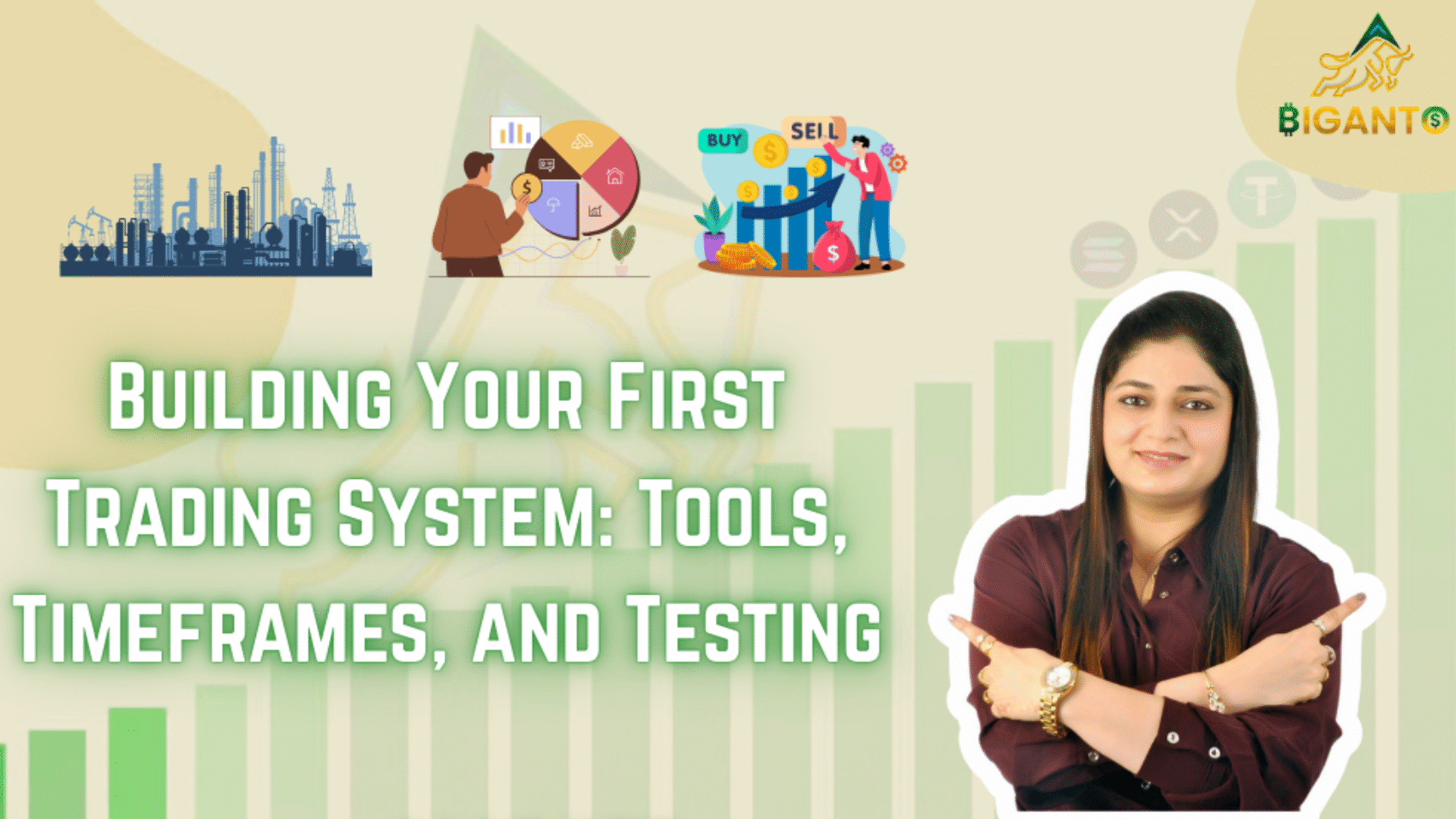Building Your First Trading System: Tools, Timeframes, and Testing
Beginners enter the market without a structured plan only to find themselves overtrading, making impulsive decisions, and losing money. The secret to making money in today’s volatile financial markets is developing a winning trading strategy. The majority of traders claim to have a highly successful trading technique nevertheless, understanding the market and your own risk tolerance are the true keys to success.
From selecting tools and periods to testing and risk management, this blog aims to explain our initial trading system.


Choosing the Right Tools for Your Trading System
Before you can start trading, you need the best trading tools for market. These tools help you analyze price action, test strategies, and execute trades effectively.
First thing is Brokers. You will need to open a trading account with a trusted broker. Choose a broker with low spreads and commissions. Fast order execution and Reliable regulation.
Now comes to the Charting Software good charting software is the backbone of any trading system. TradingView Best for beginners, simple interface, lots of indicators. When you decided Charting Software we come to Technical Analysis Tools for Trading there are so many options they will help you in taking entry and exit. There are some good indicators like
Moving Averages it will help traders to Identify trends.
RSI (Relative Strength Index) It will tell you where the trade is overbought or in oversold zones.
MACD (Moving Average Convergence Divergence) This indicator help to find momentum shifts. When the bullish is making a turn to be in bearish position.
Price action strategies (candlestick patterns, support/resistance levels, trendlines) are also powerful. Some traders rely only on price action, while others combine it with indicators for confirmation.
Timeframes for Trading
When it comes to defining your trading method, timelines are crucial. Your level of patience, and way of life will determine the ideal trading timeline.
1-min to 5-min charts
It is best for traders who thrive in fast markets. Who trades multiple times per day, but it requires high focus and discipline. It is called scalp trading.
15-min to 1-hour charts
It is good for traders who like daily activity but not too fast-paced. Traders take entry in a trade and closed within a single day. Intraday trading system for stock or forex.
4-hour to daily charts
It is perfect for part-time traders. You enter in a trade and wait for the days or weeks in this. This is called swing trading.
Weekly to monthly charts
This Timeframes suitable for investors who prefer holding positions for months or years. For the long erm need to Focus on fundamentals also.

Backtesting Your Trading System
One of the first steps in creating the most successful trading strategy is backtesting. It entails assessing its possible performance using past data and your trading procedures. For example:
Test a moving average crossover system on 5 years of stock data.
Measure win rate, risk-to-reward ratio, and profit factor.
Demo Trading
After backtesting, test your system in real-time on a demo account. This step shows whether your rules work under live market conditions without risking actual money.
Risk Management
Risk-reward ratio is the potential gain of a trade versus its potential loss. It will aid you in determining the profitability of a trade. A good risk-reward ratio is important for a profitable trading strategy in the long run.
This may very well be the most crucial component of your trading roadmap. Even the best plan will fail from the beginning if risk and finances are not managed. Protecting your cash should be your top priority, not making money.
Position Sizing: You should never risk more than 1% to 2% of your entire capital on a single trade. You can never lose in a losing run if you follow this guideline.
Conclusion
The most crucial thing you can do for yourself to become a consistently successful trader is to create an ultimate trading roadmap. Begin modestly, hone your regulations, and continuously modify your system to accommodate shifting market conditions. Keep in mind that every successful trader began with a basic plan, tested it, and then refined it over time. Because markets are constantly shifting, your approach should be adaptable enough to take advantage of new opportunities. You have a better chance of achieving your financial objectives if you keep informed and refrain from making the same mistakes repeatedly.

